From time to time, owners are faced with the responsibility of bottle-feeding a young puppy – some are even faced with the task of feeding an entire litter!
While this can seem like a bit overwhelming at first, it’s actually pretty easy to do in a safe and (relatively) mess-free fashion.
Always solicit the advice of your vet or another person wise in the ways of dogs if you need to begin a bottle-feeding regimen, as improper techniques, diets or feeding frequencies can lead to serious illness or even death. However, the basic steps for the process are outlined below.
What Should You Feed Young Puppies?
Forgive me for being a smartass here, but the best thing to feed puppies is dog milk.
That’s not a joke – there’s nothing you can buy online, in the pet store or at your vet’s office that is as effective at sustaining and supporting young puppies as dog milk is.
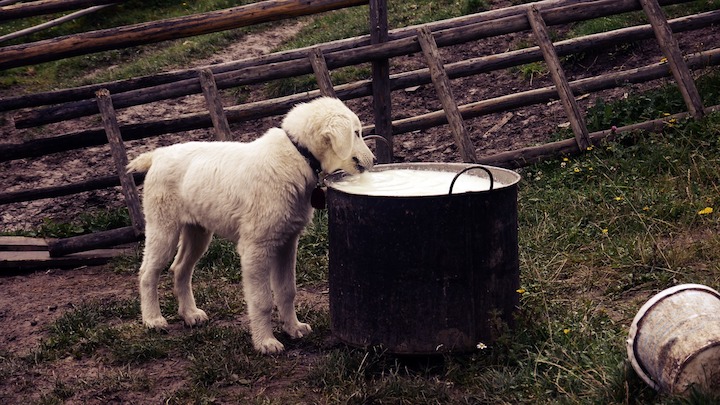
To be fair, dogs have been working on this formula for tens of thousands of years, while puppy formula manufacturers have only been doing so for a few decades, so they’re a bit behind.
For example, the first 24 hours or so worth of milk the puppies obtain from their mother is chemically distinct from the milk they’ll produce thereafter. Called colostrum, this initial milk is full of antibodies and other nutritional bells and whistles, which will help support the puppies’ immune systems and get them started on the right track.
Accordingly, it’s rarely a good idea to bottle-feed puppies who are willing and able to obtain their nourishment from mom. Unlike birds, who may become more amenable to people through the bottle-feeding process, dogs don’t need extra incentive to warm up to humans– they’ll love you plenty without extraordinary efforts. Just give them lots of love and attention, and instinct will take over on both sides.
Instead, bottle-feeding should be reserved for puppies who have been orphaned or whose mother is unable to feed them properly. Usually, dogs only will have only as many puppies in a litter as a mother can feed. But nature doesn’t always get that number exactly right, and in those cases, a little extra care will ensure all the pups make it mast puppyhood. Additionally, it may be necessary to feed runts or other dogs who fail to thrive on their mother’s milk alone.
Nevertheless, it’s probably better to err on the side of caution whenever you are in doubt. So, it’s a good idea to contact your vet and discuss supplemental bottle feedings if you think some of your puppies may need it. Assuming that you and your vet agree that bottle-feeding is the best option, you’ll need a commercial puppy formula.
Powdered Vs. Canned Puppy Formula
As long as you purchase a quality puppy formula or milk replacer, you can go with either pre-mixed canned products or a dry powder that you’ll need to mix yourself. Either type will provide the nutrition your growing puppies need.
However, there are two basic differences between powdered and canned products:
- Pre-mixed versions are much more convenient to use, although they must be kept refrigerated.
- Powdered versions are much cheaper, but must be mixed upon using.
That’s the crux of the difference right there. In an apples-to-apples comparison, the question boils down to your willingness to pay a bit more for convenience.
Quick Pick: If you only came here to get a quick formula recommendation: Esbilac Puppy Milk Replacer is quality product available at an affordable price.
Or, see our larger guide to selecting and choosing a puppy milk replacement here for further reading.

Bottle Feeding Vs. Syringe Feeding: What Tools Should You Use?
There are two different tools you can use for delivering the good stuff into your puppy’s belly: a bottle or a syringe. Each method has different pros and cons, and you may want to try both methods before deciding on your favorite.
Syringe feeding is generally much quicker to carry out, but it may lead to a considerable mess. Additionally, puppies do not appear to enjoy eating from a syringe as much as they do a nipple-tipped bottle.
By contrast, bottle-feeding takes a bit more time to complete and is a bit more laborious in general, but it provides the puppies with a more natural experience and it is less likely to cause a huge mess. By using a bottle, you also leave the “intake” part of the equation up to the little sucker, whereas you’ll need to advance the plunger of a syringe yourself. The former is certainly a more cautious approach than the latter.
Nevertheless, as long as your pups are getting the nutrition they need without swallowing too much air or getting any of the formula down the wrong pipe, you can use whichever option you prefer.
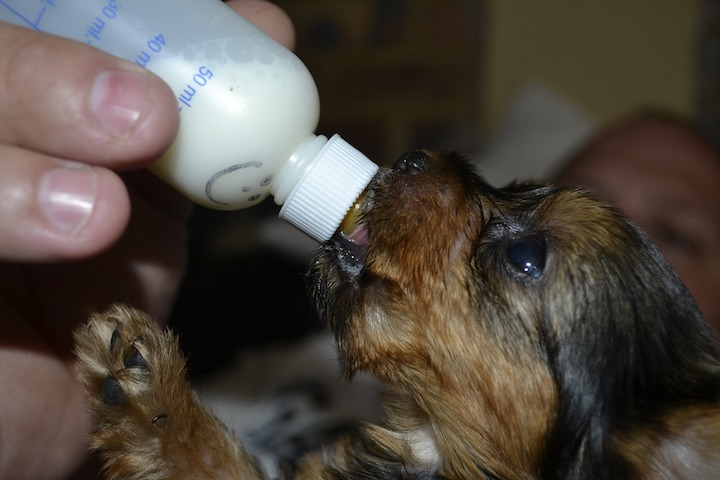
Feeding syringes (note that there is no needle associated with a feeding syringe) are usually ready-to-go on arrival, but you’ll often need to perforate the tip of the nipples that come with the bottles.
How do you perforate a bottle nipple tip for a puppy?
One good way to do so is by heating a safety pin and making two small holes in the tip of the nipple. This will usually make a pair of holes that allow the proper amount of formula to pass through the nipple without overwhelming the puppy – if you shake it vigorously, only a few drops should escape the nipple.
While we’re on the subject of tools, you may want to find a good digital scale handy for weighing the puppies and tracking their progress.
Healthy puppies may put on up to 15% of their body weight every 24 hours, and you’ll want to know if your puppies are deviating from this norm.
Cooking Up Dinner: How to Mix Up Puppy Milk Formula
If you are using pre-mixed formula, you can skip down to the next section. Otherwise, continue reading to learn how to prep your puppy’s milk replacement.
Alright, first thing’s first:
- Wash your hands before doing anything, Pigpen. Preparing puppy formula requires a commitment to cleanliness, lest you get your cute little bundles of joy sick. Their immune systems are still getting revved up, and you don’t need to challenge them with any of the bajillions (technical term) of bacteria crawling on your hands.
- Next, you’re going to need to sterilize all of your equipment (bottles, syringes, etc.) by immersing it in boiling water for a few minutes each time you mix up a batch of formula. Using clean tools will further reduce the chances of introducing pathogenic bacteria into your puppies’ bellies, and it also helps ensure that any bacteria that jumped aboard from the last feeding will be removed.
- Hands and tools clean, it is time to mix up the formula per the manufacturer’s instructions. Most products are designed to be mixed into boiling water and then cooled to the appropriate temperature. Be aware that any unused formula should be discarded no longer than 24 hours after you mix it up. In the meantime, you’ll need to store it in the refrigerator to keep it from spoiling.
Remember that if you are preparing more formula than you can use at one time, you’ll want to sterilize the storage container before filling it.
I know this all sounds like an incredible headache, but you’d be surprised how quickly you can adapt to your puppy-feeding system, once you get used to it.
Heating the Puppies and Their Food
The enzymes floating around in the bodies of dogs prefer slightly warmer temperatures than those floating around in humans do. Dogs are healthiest when they have a slightly higher body temperature than humans do – 100.2 to 103.8 Fahrenheit, to be exact.
But puppies lack the ability to control their body temperature effectively. They’re crazy tiny, which means that they have a lot of skin (through which heat radiates) relative to their body size. This is a recipe for rapid body-temperature changes, and these can be extremely dangerous for small puppies.
Accordingly, you’ll need to ensure the puppies stay warm and provide them with warm food to keep them healthy.
If your dogs don’t have a mother to snuggle with, put a high-quality heating pad under one-third to one-half of their box or container. Use the thermostat function to keep the temperature at about 85 degrees Fahrenheit – just be sure the puppies can move off of the heat if they so desire.
Additionally, you’ll want to include some snuggling materials in the box, just be sure that you don’t use anything you are too attached to; puppy-rearing is a messy endeavor.

When you are ready to feed the puppies, heat the formula (or allow it to cool, if you are just making it) by placing the bottle in a bowl of warm water for several minutes. Test the temperature by squirting a little of the milk onto the inside of your wrist – it should feel warm to the touch, but never use formula you would consider hot. If you have a sterile way of taking the formula’s temperature, you can shoot for 98 to 100 degrees Fahrenheit.
Bottle, Meet Mouth
Now that you are armed with a fresh bottle of warm formula, it is time to feed the hungry little pups.
Start by arranging all of the supplies you will need (including the bottles or syringes, a few soft towels and anything else you find helpful) and establishing a comfortable place to sit down with the puppies.
When you reach out for them, they should feel warm and alert, and they may even cry or squirm. If any of the puppies are lethargic, cold or unresponsive contact your vet immediately.
Wrap one of the puppies in a warm blanket so that he does not get chilled during the process. This will also help you contain the puppy’s wriggling paws, making it easier to hold onto him. Once this is completed, it is time to start feeding.
Place the puppy on his belly to start. It is important to feed young puppies carefully to prevent fluids from entering their lungs. This can cause serious illness or death, and should be avoided at all costs. Accordingly, puppies should always be fed while resting on their belly – never feed them while they are resting on their back.
Once you’re situated, try to insert the syringe tip or nipple into the puppy’s mouth. You may have to use a “prying” motion to get started. With luck, the pup will latch on and begin suckling immediately. However, it may take a moment for the little guy or gal to figure things out, so be patient.
Be sure that the puppy is not getting too much formula. If you note any fluid coming out of the sides of his mouth or his nose, stop and re-evaluate your procedures – contact your vet if you cannot detect an obvious solution (such as making smaller holes in the nipple).
Puppy Feeding Quantity and Frequency
Each day, a healthy puppy should eat about 1 ounce of food for every 8 ounces of body weight. So, a 5-pound puppy would need about 10 ounces of food each day; a 1-pound-pup would only need 2 ounces of food a day.
The key is to administer this food over several feedings each day. Watch your puppy’s tummy as you feed him – it should expand into a vaguely round shape, but avoid over-doing it – this will only lead to an upset stomach.

Young puppies have small stomachs and serious calorie demands for their size, so they need to eat much more frequently than adult dogs do. Minimally, you should feed puppies younger than 4 weeks every 6 hours, but it is preferable to feed them twice this often.
HELPFUL HEALTH TIP: Healthy, well-fed puppies don’t spend every waking hour crying – they tend to sleep, wiggle around a bit and generally remain quiet until shortly before their next #fdf1cb#fdf1cbfeeding. Pups that cry constantly should trigger an automatic call to the vet.
After-Dinner Unpleasantness
Feeding isn’t the only thing you’ll need to do when substituting for mama dog; you’ll also need to ensure the puppies eliminate, as they require a little help to get the job done.
The mother will (I hesitate to say it) do so orally, but you’ll probably want to use a damp cloth or cotton swab to achieve the same effect.
Essentially, you’ll need to gently rub each puppy’s belly, crotch and anal region to get them to poop and pee. Don’t be alarmed: Puppy poo is essentially like mustard-colored toothpaste (you’re welcome for that image).
That’s normal.
Puppies won’t necessarily poop after every feeding, but they should do so regularly.
Clean up the mess, clean up the dog, wash your hands and move on to feeding the next puppy.
Important Developmental Milestones for Puppies
It’s a good idea to keep the basic developmental milestones in mind when you embark upon the process of raising orphaned or otherwise-needy puppies.
Although there is obviously a bit of variation that naturally occurs, most puppies reach the following milestones by a given time.
- The puppies are born with closed eyes and folded ears on day 1.
- The umbilical stump will dry up and fall off around day 5.
- The puppies will begin opening their eyes between days 14 and 21.
- Puppies can usually begin crawling by 3 weeks of age. Their ears will also start to straighten at this time.
- Puppies can often stand at 4 weeks, and the weaning process can begin about the same time. Make sure you plan ahead and get a high-quality puppy food by the time week 3 rolls around.
- Puppies can usually eat from a bowl by the end of their 5th week of life.
While failure to reach these milestones doesn’t necessarily indicate a problem, it is wise to consult your veterinarian any time your puppies begin to lag behind the general progression.
***
Have you ever raised puppies and fed them with a bottle or syringe? What part of the process did you find most challenging? Do you have any nifty tricks to share? Let us know in the comments.
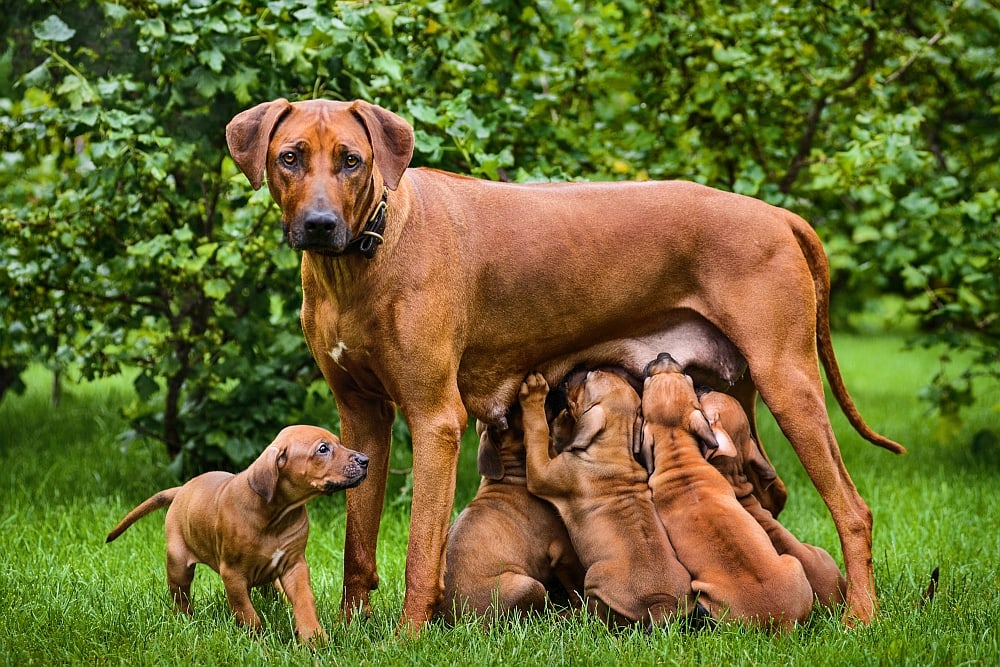



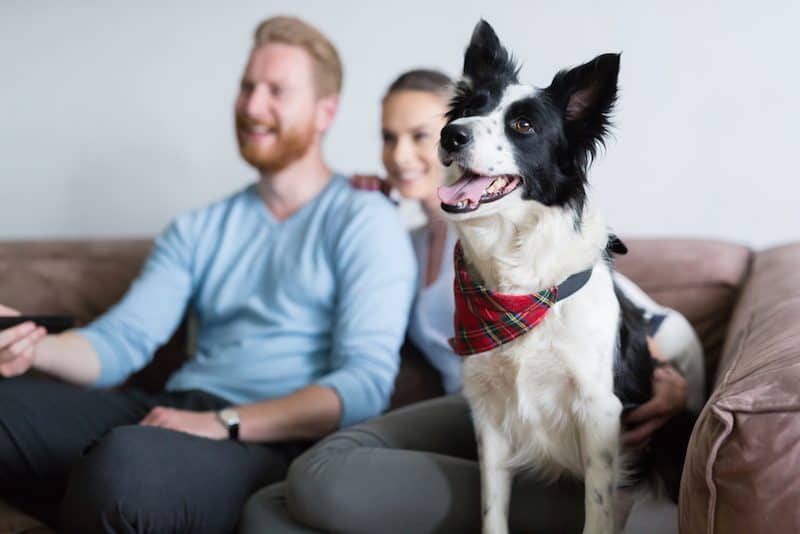
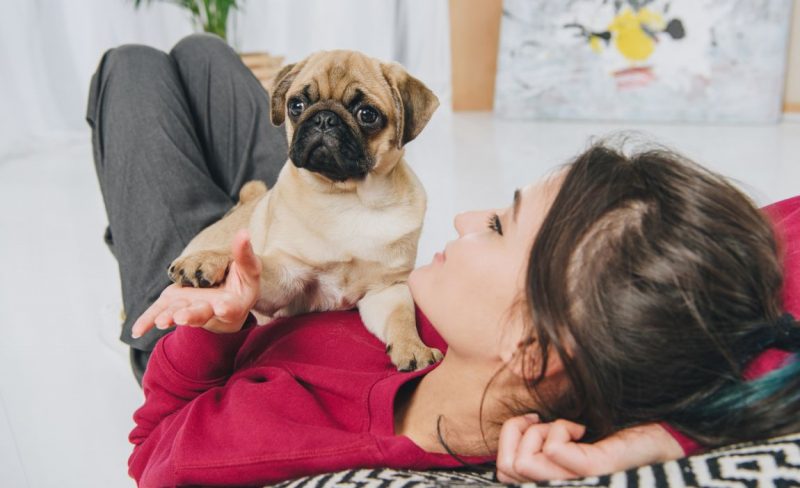
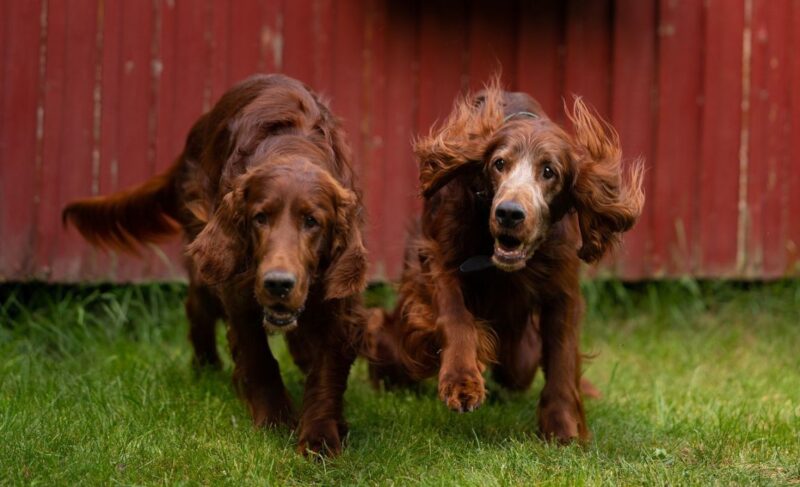

Leave a Comment